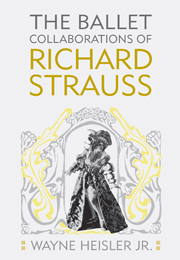Book contents
- Frontmatter
- Contents
- List of Illustrations
- Acknowledgments
- Introduction: Richard Strauss, Dance, and Ballet
- Part One Becoming a Ballet Composer, 1895–1914
- Part Two “To drive away all cloudy thoughts,” 1919–1941
- 3 The Strauss–Heinrich Kröller Ballettsoirée (1923) and Interwar Viennese Cultural Politics
- 4 Kitsch and Schlagobers (Whipped Cream, 1924)
- 5 Verstrausster Couperin, Verklingender Strauss, Verklungene Feste: Tanzvisionen aus Zwei Jahrhunderten (Bygone Celebrations: Dance Visions from Two Centuries, 1941)
- Epilogue
- Notes
- Works Cited and Consulted
- Index
- Eastman Studies in Music
4 - Kitsch and Schlagobers (Whipped Cream, 1924)
from Part Two - “To drive away all cloudy thoughts,” 1919–1941
Published online by Cambridge University Press: 12 September 2012
- Frontmatter
- Contents
- List of Illustrations
- Acknowledgments
- Introduction: Richard Strauss, Dance, and Ballet
- Part One Becoming a Ballet Composer, 1895–1914
- Part Two “To drive away all cloudy thoughts,” 1919–1941
- 3 The Strauss–Heinrich Kröller Ballettsoirée (1923) and Interwar Viennese Cultural Politics
- 4 Kitsch and Schlagobers (Whipped Cream, 1924)
- 5 Verstrausster Couperin, Verklingender Strauss, Verklungene Feste: Tanzvisionen aus Zwei Jahrhunderten (Bygone Celebrations: Dance Visions from Two Centuries, 1941)
- Epilogue
- Notes
- Works Cited and Consulted
- Index
- Eastman Studies in Music
Summary
A conception of a dance that is truly artistic requires creative talent, strong musicality, imagination, and good taste. (Um einen wirklich künstlerischen Tanzentwurf zu machen, bedarf es schöpferischer Begabung, starker Musikalität, Phantasie und guten Geschmackes.)
—Heinrich Kröller, “Moderne Choreographie” (1922)This whipped-cream morsel is, however, not so easy to digest. (Aber ganz leicht verdaulich ist dieser “Schlagobers”-Broken eben doch nicht.)
—Heinrich Kralik, Neues Wiener Tagblatt (May 10, 1924)As discussed in chapter 3, Strauss had been stirred by the Ballets Russes since the time of Josephslegende (1914) and set out to emulate Diaghilev's enterprise while serving as codirector of the Vienna Staatsoper from 1919 to 1924. Hoping to revamp the Vienna Opera Ballet, the composer recruited the dancer-choreographer Heinrich Kröller to the Austrian capital. There, Kröller brought a number of dance productions to the stage, including Josephslegende (1922), Carnaval (1922), Don Juan (1924), and Die Ruinen von Athen (1924), all of which involved Strauss on some level (see the introduction to chapter 3). Riding the wave of the artistic and cultural-political success of the 1923 Ballettsoirée—the first true collaboration between Strauss and Kröller—composer and choreographer saw to completion their most ambitious and provocative project yet: Schlagobers (Viennese dialect for “whipped cream”), subtitled Heiteres Wiener Ballett (Comic Viennese Ballet) and given its premiere on May 9, 1924. Despite its obscurity, Schlagobers was one of Strauss's major endeavors of the 1920s, along with the operas Intermezzo (1924) and Die ägyptische Helena (1927).
- Type
- Chapter
- Information
- The Ballet Collaborations of Richard Strauss , pp. 127 - 170Publisher: Boydell & BrewerPrint publication year: 2009



